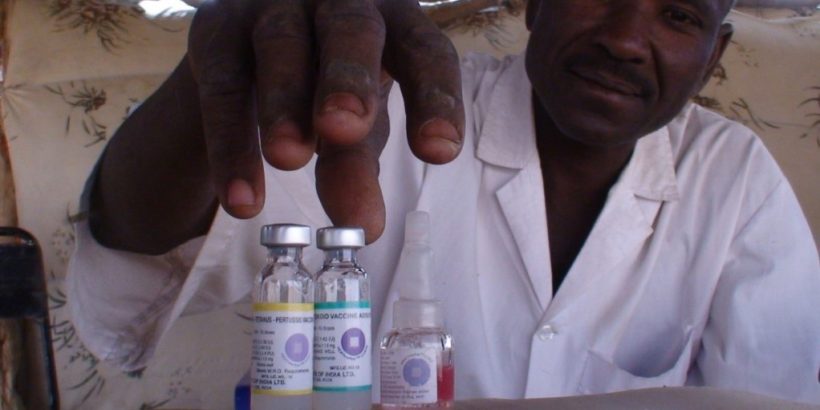Prequalification: you may have heard the term before – but what does it actually mean for a vaccine to be “prequalified”? And why does it matter for taking on diseases like typhoid?
To answer this, we need a bit of a global health history lesson.
A brief history of vaccine prequalification
Let’s first go back to 1946, when the World Health Organization (WHO) constitution was first adopted and signed before it was entered into force in 1948. According to Article 2 of the constitution, part of WHO’s mandate is to “develop, establish and promote international standards” for biological products like medicines and vaccines. In order to fulfill this mandate, WHO created the Expert Committee on Biological Standardization (ECBS) in 1947, which has been meeting annually ever since.
Fast forward to 1974, at the start of WHO’s Expanded Programme on Immunization (EPI). Many countries were procuring (i.e., purchasing) the initial six EPI vaccines—diphtheria, pertussis (whooping cough), tetanus, measles, poliomyelitis, and tuberculosis—through the United Nations Children’s Fund (UNICEF) Supply Division. One of the challenges for the ECBS was to ensure that vaccines purchased by WHO, UNICEF, and other UN agencies met appropriate standards of quality, safety, and efficacy. Initially, this quality control was done through national vaccine testing or testing at WHO centers, but eventually a more formal process became necessary.
Thus, in 1987, prequalification was born! WHO published its first set of vaccine prequalification requirements, focused on a review of production consistency and an inspection of the manufacturing site(s) to ensure good manufacturing practices. While prequalification was originally a service provided by WHO to UNICEF only, it was eventually extended to all UN procurement agencies.
Prequalification today
Prequalification continues today as an essential process to help ensure that vaccines used in immunization programs are safe, effective, and appropriate for countries’ needs. The current WHO prequalification procedure consists of a transparent, scientifically sound assessment that includes reviewing the evidence, testing the consistency of each lot of manufactured vaccine, and visiting the manufacturing facility.
Following the initial assessment, prequalification is regularly reassessed to ensure continued compliance and promptly address any concerns. Once vaccines are prequalified for procurement, they are then subjected to a final “qualification” process. During qualification, vaccines are selected based on a specific country’s needs—considering both disease epidemiology and programmatic requirements like heat stability, presentation, labeling, and shipping conditions—and are purchased and delivered to the country.
Because the UNICEF Supply Division procures vaccines for countries on behalf of Gavi, the Vaccine Alliance, all vaccines supported by Gavi must be prequalified in order to be introduced into Gavi-eligible countries. The prequalification stamp is therefore a key step in low-income countries’ ability to access and use a vaccine.
Prequalification of typhoid vaccines
So, why is prequalification important to #TakeOnTyphoid?
Typhoid conjugate vaccines (TCVs) are a newly available typhoid vaccine that, compared to the current typhoid vaccines, have longer-lasting immunity, require fewer doses, and can be given to young children through routine childhood immunization programs. This makes them a potential game-changer for communities suffering from typhoid and for the fight against drug resistance.
In October of this year, WHO’s Scientific Advisory Group of Experts (SAGE) on Immunization issued a recommendation that typhoid-endemic countries add TCVs to their national immunization programs. Then, in late November, Gavi approved US$85 million in funding for TCVs starting in 2019. Prequalification is therefore a crucial next step needed to make TCVs available to low-income countries where they are needed most. And even in non-Gavi-eligible countries, prequalification can help fast-track licensure.
While no TCVs are prequalified yet, one vaccine—Bharat Biotech’s Typbar TCV®—is expected to become prequalified very soon. The vaccine’s safety and immunogenicity have been demonstrated in clinical trials, and it is already registered for use in the private sector in India and Nepal. Typbar TCV is expected to be the first, but other TCVs in development may eventually become prequalified as well, expanding the market for these lifesaving new tools.
The prequalification process is essential for all vaccines. We are grateful that it exists, and especially grateful that a typhoid conjugate vaccine may soon join the ranks of prequalification.
References used: WHO website and this article.
Photo: PATH/Umit Kartoglu



